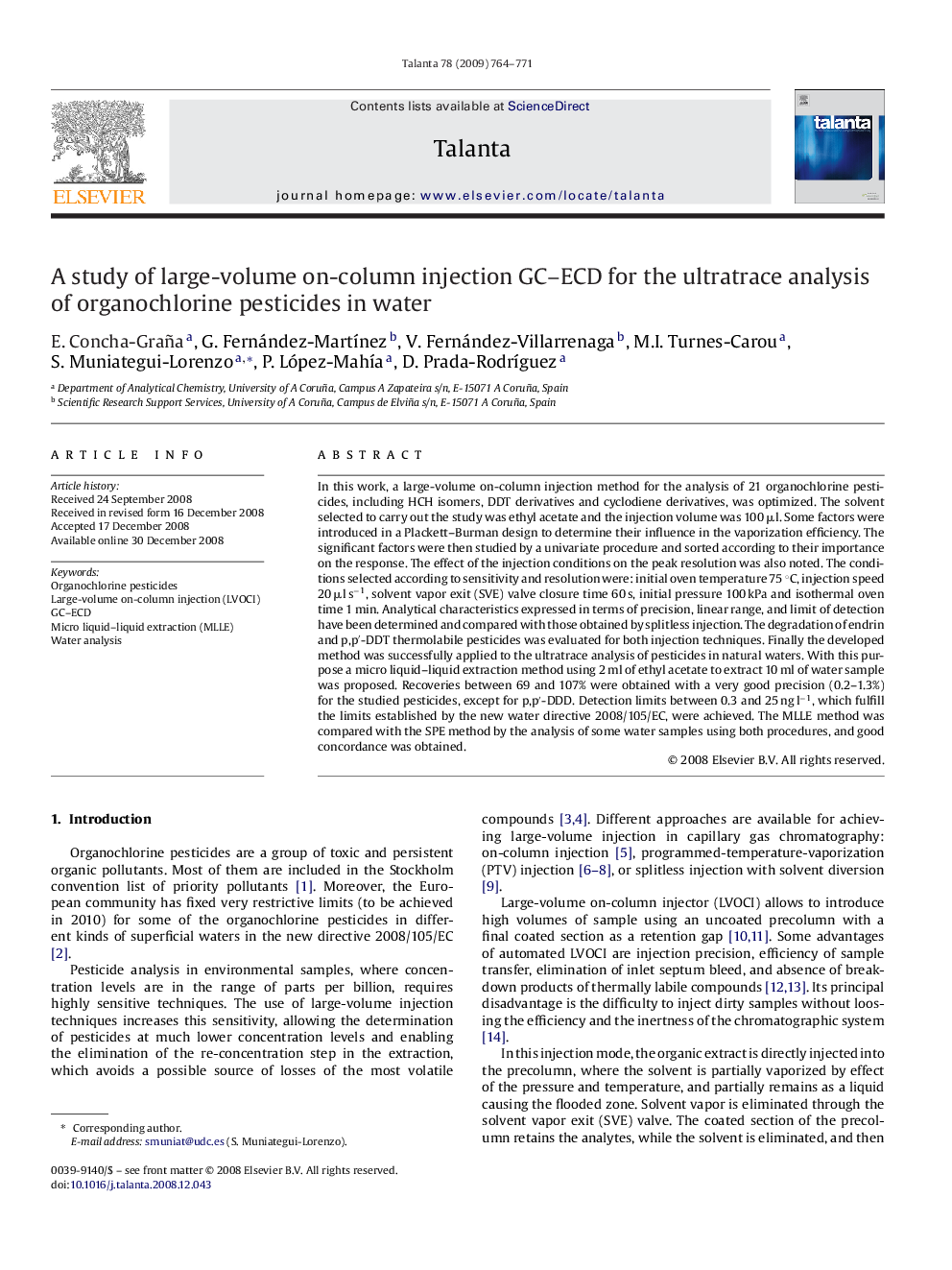| Article ID | Journal | Published Year | Pages | File Type |
|---|---|---|---|---|
| 1244900 | Talanta | 2009 | 8 Pages |
In this work, a large-volume on-column injection method for the analysis of 21 organochlorine pesticides, including HCH isomers, DDT derivatives and cyclodiene derivatives, was optimized. The solvent selected to carry out the study was ethyl acetate and the injection volume was 100 μl. Some factors were introduced in a Plackett–Burman design to determine their influence in the vaporization efficiency. The significant factors were then studied by a univariate procedure and sorted according to their importance on the response. The effect of the injection conditions on the peak resolution was also noted. The conditions selected according to sensitivity and resolution were: initial oven temperature 75 °C, injection speed 20 μl s−1, solvent vapor exit (SVE) valve closure time 60 s, initial pressure 100 kPa and isothermal oven time 1 min. Analytical characteristics expressed in terms of precision, linear range, and limit of detection have been determined and compared with those obtained by splitless injection. The degradation of endrin and p,p′-DDT thermolabile pesticides was evaluated for both injection techniques. Finally the developed method was successfully applied to the ultratrace analysis of pesticides in natural waters. With this purpose a micro liquid–liquid extraction method using 2 ml of ethyl acetate to extract 10 ml of water sample was proposed. Recoveries between 69 and 107% were obtained with a very good precision (0.2–1.3%) for the studied pesticides, except for p,p′-DDD. Detection limits between 0.3 and 25 ng l−1, which fulfill the limits established by the new water directive 2008/105/EC, were achieved. The MLLE method was compared with the SPE method by the analysis of some water samples using both procedures, and good concordance was obtained.
